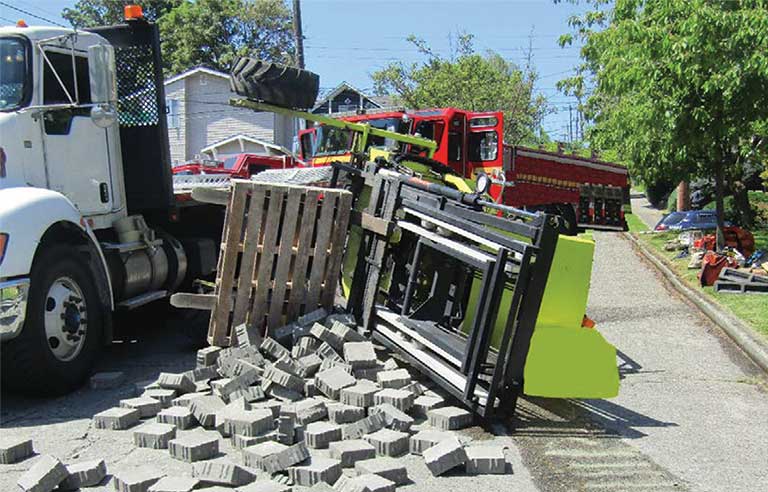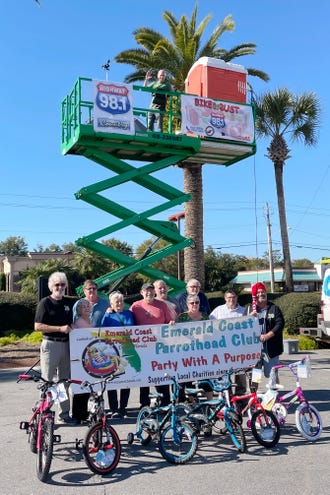We thank you for your continued support for the past year and wish health and happiness to all in the New Year.
Please note that our offices will be closed on December 24, 27 and on January 3.
Normalization of Deviations in Performance.

Introduction
To some extent, many organizations, if not all, suffer from some form of performance deviation.
This can manifest itself in any goal or standard against which organizations may measure themselves.
Such failures are usually due to organizational systems shortcomings or human action.
Generally, in aviation prior to World War II, most accidents were attributable to mechanical (system) failure.
During WWII manufacturing, technology and design improved such that more accidents became attributable to pilot (human) error than to mechanical failure.
To counter this, human factors were incorporated into airplane design, and standard operating procedures were developed for crews, garnering some improvement.
In 1980, the adaptation of crew/cockpit resource management aligned systems which helped greatly, making air travel safer than most other modes of transportation.
Deviating Standards of Performance
I attended a conference not long ago where Mike Mullane, a former astronaut, was the keynote speaker.
Mullane spoke of leadership and performance standards.
He used examples from his time in NASA, but his message is equally applicable to any industry, especially the construction industry.
The point of his talk was the "normalization of deviance."
This concept was developed by Diane Vaughan in her exceptional study of the space shuttle Challenger accident.
Mullane stressed the need to guard against the insidious effect of this concept.
Normalization of deviance is a phenomenon by which individuals, groups or organizations come to accept a lower standard of performance until that lower standard becomes the "norm" for them.
This phenomenon usually occurs when individuals, groups or organizations are under pressure to meet schedule requirements, conform to budgetary considerations or deliver on a promise, while adhering to expected standards or prescribed procedures.
Faced with a situation in which relaxing the standards or procedures gets the "job done," they decide to utilize lower standards or less robust procedures with the expectation that when things get back to "normal," they will go back to utilizing the higher standards or procedures.
Generally, the problem is resolved and, to their relief, with no adverse effect.
However, the pressures do not seem to abate, and the lower standard may be used again.
Every time this is done successfully, it becomes easier to do it the next time.
The successful use of the lower standard over time is perceived as somehow an acceptable substitute for the original standard and, therefore, becomes the norm or the "new" standard for performance.
As a result, the individual, group or organization stops seeing its action as deviant.
The NASA Example
A classic example of normalization of deviation involves the two NASA space shuttle accidents involving the Challenger and the Columbia vehicles.
The Challenger accident was the result of O-ring seal failure.
It is interesting to note that four different vehicles flew 24 missions before the Challenger accident.
NASA found indication of O-ring malfunctioning after every flight, with no significant consequences.
As a result, the concern for these deviations and the potential for a disastrous outcome were basically ignored.
The Rogers Commission, set up to investigate this accident, found that NASA's organizational culture and decision-making processes had been key contributing factors to the accident.
NASA managers had known that contractor Morton Thiokol's design of the solid rocket boosters contained a potentially catastrophic flaw in the O-rings since 1977 but failed to address it properly.
They also disregarded warnings from engineers about the dangers posed by launching at the low temperatures of that morning and failed to adequately report these technical concerns to their superiors.
Deviations from proper practice became normalized and accepted as the "new" operating practice.
NASA had a major stand-down, implementing some changes to the vehicles as well as processes, practices and procedures going forward.
Seventeen years later, another normalization of deviation caused the loss of the Columbia space shuttle.
During the launch of STS-107, its 28th mission, a piece of foam insulation broke off from the space shuttle external tank and struck the leading edge of the left wing.
Most previous shuttle launches had seen minor damage from foam shedding with no serious consequence to the integrity of the vehicles.
When the shuttle reentered the atmosphere of earth, the damage allowed hot atmospheric gases to penetrate and destroy the internal wing structure, which caused the spacecraft to become unstable and slowly break apart, killing all on board.
After the disaster, space shuttle flight operations were suspended for more than two years, similar to the aftermath of the Challenger disaster.
Since the program ended, it is not clear if, after the second disaster, the safety culture at NASA had really changed or not.
Safety cultures evolve gradually over time in response to local conditions, work pressures, the character of leadership and the perception of the workforce.
Acceptance of deviations from prescribed standards occurs gradually, affecting the culture in very subtle ways.
Turning to the Construction Industry
Production pressures are common in construction. It is easy to see the normalization of deviance taking root.
If a worker needs to use a stepladder to perform a task, but one long enough is not readily available, the worker is faced with a choice to take the time to find a longer one and possibly fail to meet the production goal or use the shorter one and get the job done.
If the supervisor stresses production goals and the worker feels that his or her job might be in jeopardy, the logical choice will be to use the shorter ladder and meet the production goal.
If the worker chooses to bring up the lack of proper equipment being available for the task, the supervisor is also faced with a choice of accepting a delay or reduction in production while the appropriate equipment is secured or asking the worker to make do with what they have and get the job done.
Underlying this decision is the knowledge that work has been successfully completed in the past with less-than-optimal equipment or procedures with little or no adverse effect.
In order to solve the immediate conundrum, the supervisor may ask the worker to proceed anyway but to be extra careful.
The worker does so successfully.
The next day, they still do not have longer ladders, and the worker proceeds working on the top step of the shorter ladder.
After a few days, the worker does not even think about the safety coordinator's admonitions.
Working this way becomes accepted practice, and the deviation becomes normal practice.
The schedule is a powerful driver of production.
When supervisors succeed in overcoming barriers through deviations from "good" work practices without adverse effects, they reinforce the use of performance discrepancies and deviant practices.
After repeating this a few times, solving performance pressures by deviation becomes institutionalized, forming a culture of production, which leads to acceptance of deviations from good work practices.
Therefore, the reasons for a future failure conforms to accepted deviant practices, and the prevailing unsafe work culture rather than the violation of the original "good" performance standards.
Examples and Explanations
In work situations, a manager makes a wrong judgment call, a supervisor makes a miscalculation, or a worker takes a risk or ignores a safety rule, with no major consequence.
Later, another situation arises that can be resolved with the same improper approach, and eventually it becomes easy to repeat the improper action because it seems to work and solves the immediate problem.
That approach becomes the accepted way to deal with similar situations going forward.
Not only is the deviation normalized, but it becomes the "new" normal and the accepted way to do things.
Following are a few examples of reasons why there are normal deviations from standard practices in organizations: When achieving production goals is stressed and safety rules ignored, workers come to believe that how they are going about doing their jobs is in fact in the organization's best interest.
This justification of deviation reinforces the perception that safety rules are counterproductive and breaking them is actually beneficial.
Depending on the work climate or the perception of the workers of expectations and consequences, they may be afraid to speak up or point out barriers to performance, such as unreasonable expectations, insufficient time, deficient resources, or any other impediment to getting the job done.
This leads to deviation from standards using inappropriate behavior.
Repeated success increases the likelihood that rules will be violated and will eventually become normalized.
Changing the Culture
Reversing the normalization of deviance is difficult unless there is a structural change in the organization.
This is not easy to do, as it is the culture and work climate that allows these deviations to occur and become accepted. According to James Reason, a poor safety culture has three overriding factors:
1. Normalization of deviance is discussed at length above.
2. Complacency results in accepting risk or underestimating the exposure of the act due to past experience.
Complacency turns people into observers or passive participants rather than actively contributing stakeholders.
3. Tolerance of inadequate systems has numerous fundamental cultural, leadership and organizational causes, which will be addressed in a future article.
Conclusion
Organizations generally have an expected "conduct of operations."
This is how they would ideally want to operate.
This may involve meeting or beating the project schedule and/or budget, operating at a high level of efficiency, meeting or exceeding expectations, treating partners fairly and operating ethically while being profitable.
In short, "conduct of operations" represents a system of policies, practices and procedures that ensure requirements are being met.
Unfortunately, no organization is immune to the normalization of deviance, regardless of how robust its conduct of operations system may be.
People erroneously come to believe that a minor departure from defined procedures is acceptable, when in fact they have started down the road that eventually will result in some sort of catastrophe.
New Pricing Structure for 2022.

In order to endure the events of the past two years, we had to make a lot of tough decisions and take several significant measures to adapt and keep functioning to the level our clients have come to expect.
While these actions have helped increase our operational efficiency, consistent upward trends in the costs of doing business in the modern world have surpassed our ability to absorb them.
It is with that in mind that we announce the first significant adjustment to our pricing structure in over twenty-four years.
Effective January 17, 2022, price increases across all of our products and services will take effect.
This change in pricing was calculated to be as modest as possible and, in the case of our Operator Compliance Packages, is the first change in pricing since 1997.
In addition, several additional tiers have been added to the volume discount pricing structure of our operator training Compliance Packages creating greater access to the discount pricing and further minimizing the pricing increases at certain volumes.
Looking ahead, we are optimistic that the global situation will stabilize and thank you for your continued support.
The IVES Team.
Product Feature: Trainer Power Packs

Trainer Power Packs are the ultimate tool to complement your forklift, mobile elevating work platform, loader and excavator operator certification training.
If you are looking for ways to increase the effectiveness of your classroom presentations as well as add an element of color and visual enhancement to your overall presentation, look no further!
These valuable training aids and training materials have been assembled into a handsome sturdy carrying case for the trainer on the go.
Fit all your training material, including your Trainer’s Manual, pens, markers and papers into this ideal case and you are on your way.
Incident Report: Delivery driver dies when forklift overturns.

A delivery driver died when the truck-mounted forklift he was operating overturned on a city street.
The driver had worked for his employer, a landscape materials supplier, for 18 months.
He had a commercial driver’s license and had worked as a delivery driver for other companies.
On the day of the incident, the driver was delivering eight pallets of manufactured stone landscape paving blocks to a newly constructed residence.
He parked his flatbed truck curbside facing downhill on a 20-degree slope of the street.
He used the three-wheel drive, truck-mounted forklift to deliver six pallets.
As the driver prepared to lift a seventh pallet from the flatbed, he positioned the forklift in the street to the side of the flatbed.
The forklift’s left front wheel was in a 1¾-inch depression in the road.
As he was lifting the pallet, the weight of the load and the position of the wheel caused the forklift to overturn.
The driver, who was not using the seat belt, was pinned under the forklift’s overhead guard.
He died at the scene.
To prevent similar occurrences:
- Employers should train employees to avoid driving truck-mounted forklifts on steep slopes.
- Drivers should ensure they choose a safe place to both park the delivery vehicle and operate the forklift.
- Employers should train forklift operators to follow the requirements of the manufacturer’s operator’s manual.
- Employers should consider equipping forklifts with a safety interlock system that requires the operator to be in the seat with the seat belt fastened to operate the forklift.
- Employers should consider unplanned site visits to ensure employees are following proper safety practices.
Ask Bob

Free technical support for all IVES Certified Trainers!
Question:
Hi Bob!
In California is it acceptable to have a digital online only Forklift daily inspection document or should a physical Forklift Inspection be required?
Answer:
Great question and glad you asked.
All regulatory agencies expect that a daily pre-use inspection is conducted per the manufacturer.
Whether it is done electronically or on paper does not matter as long as the records of the inspections are retained by the employer and accessible to operators.
We suggest that you keep at least 6 months of back inspections to show that they are being done consistently in case of an investigation.
Interesting Articles
- $1 billion lost in system to protect underground utilities in Missouri...more.
- Man killed in forklift accident at Home Depot...more.
- VIDEO: Worker at Distribution center dies after Forklift hits him ...more.
- UK farm fined over $75,000 USD after worker killed by telehandler...more.
- VIDEO: Thieves smash into bank with a stolen front-end loader...more.
- Florida DJ spends 4 days living in scissor lift to promote Bikes for Kids...more.

Client Testimonials

"IVES Training, in my opinion remains the gold standard in training." Alexy, Equinix Inc.
"The program really opened my eyes about safety of myself & others around me." Pratap Sandhu, Swift Management.